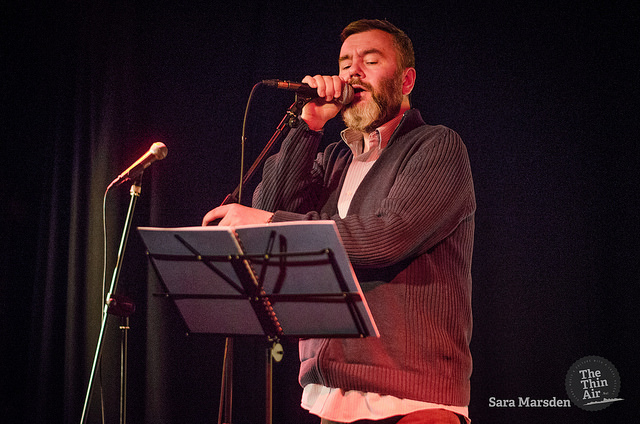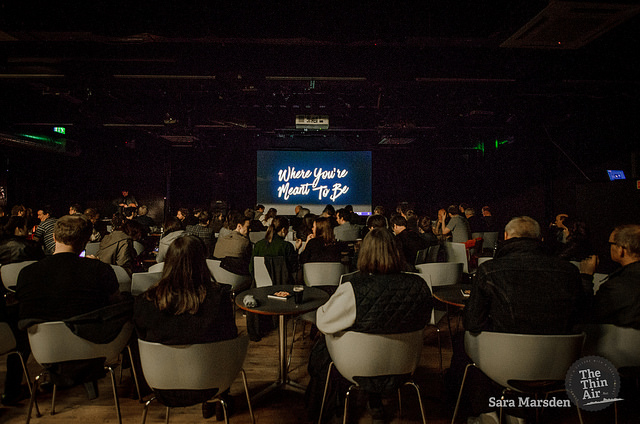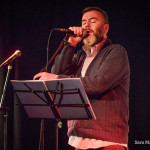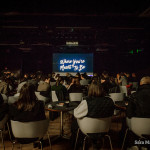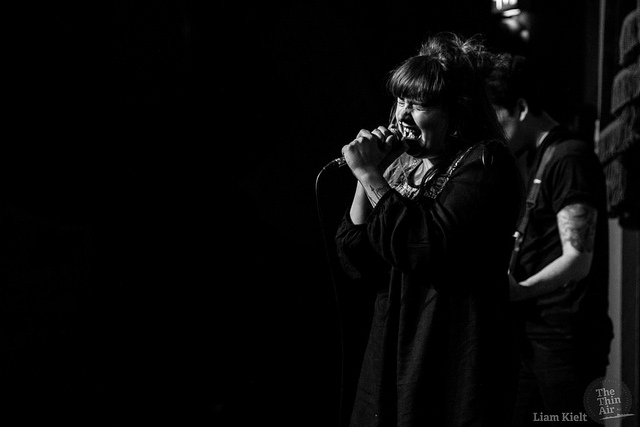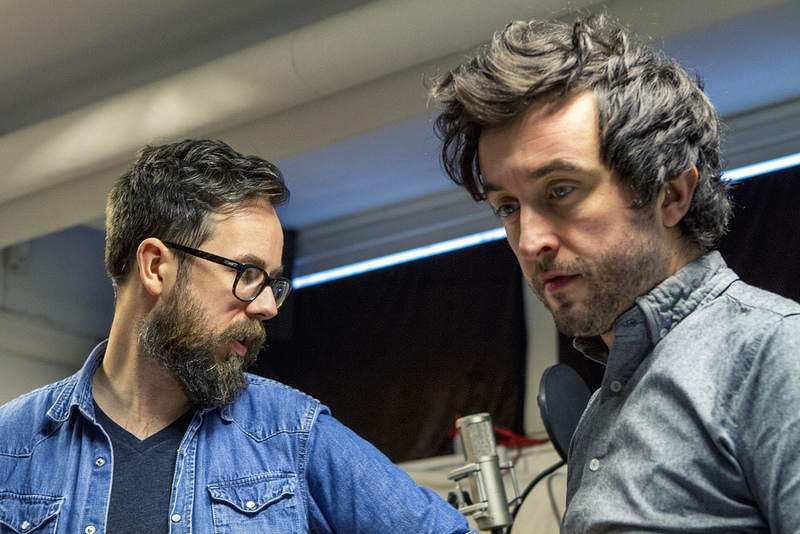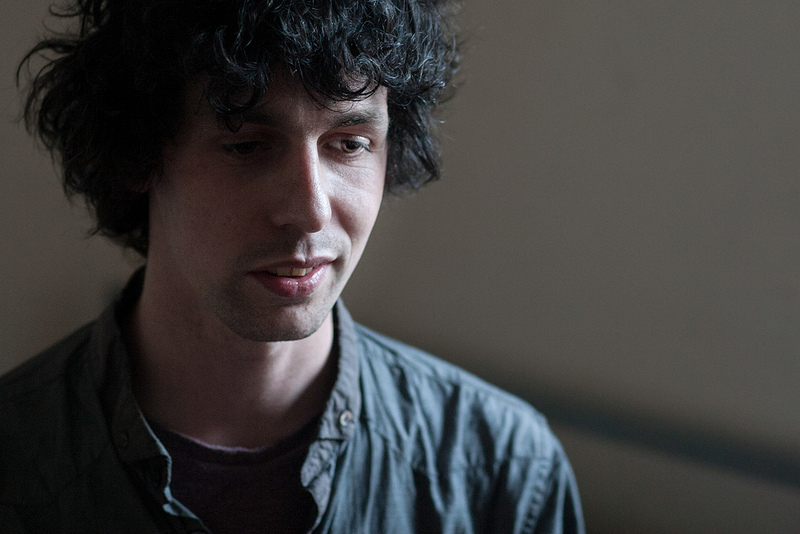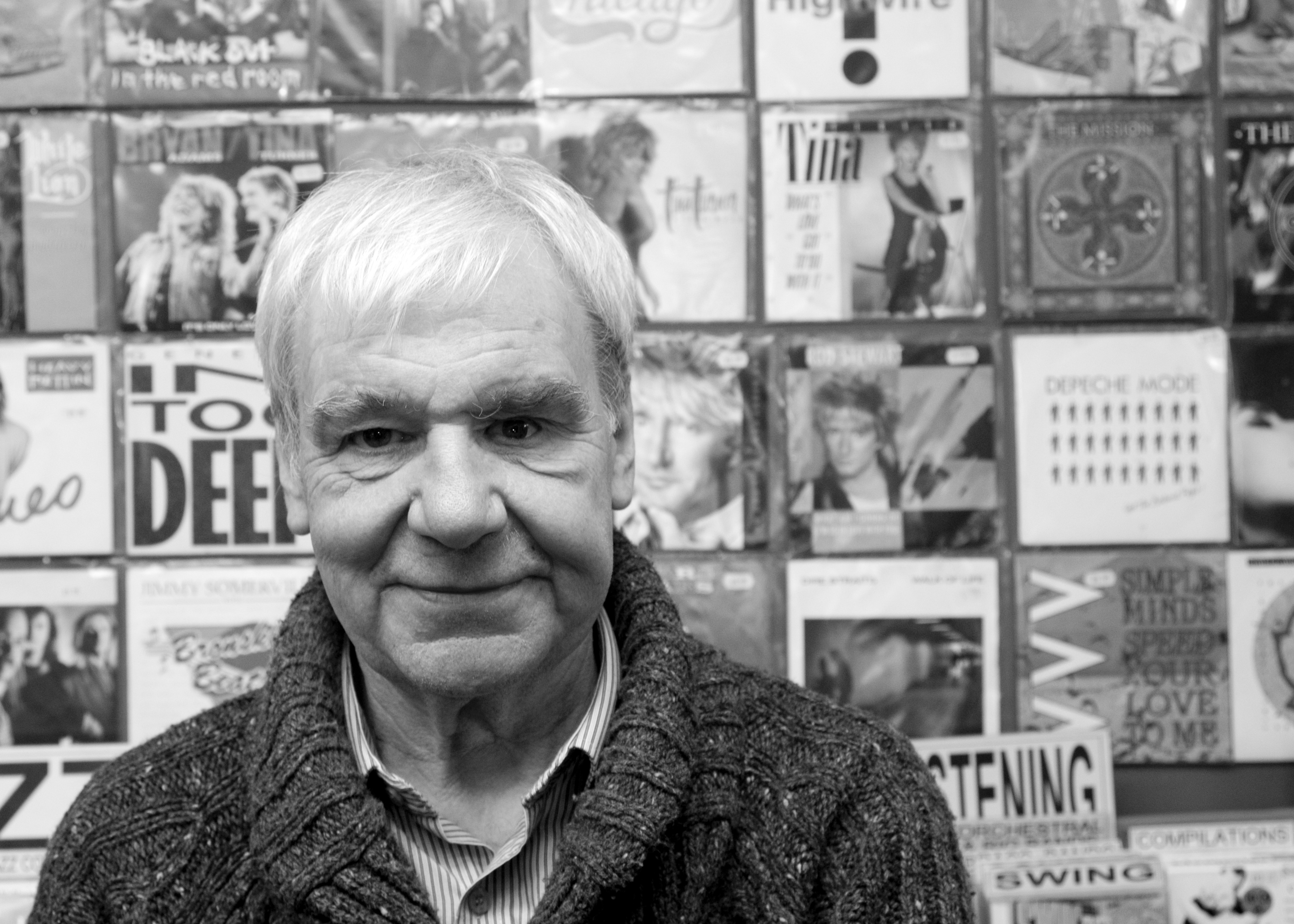Aidan Moffat has been a busy man over the last few years but that hasn’t stopped him from quietly taking the Scottish folk songs of the countryside and transplanting them to the city. Working alongside documentary filmmaker Paul Fegan, Where You’re Meant To Be is part Road movie and part music documentary. Where You’re Meant To Be is Fegan’s first feature-length but the director is a former music promoter in Glasgow and has previously made a short film Pouters (streaming for free online) alongside a number of music videos for Aidan Moffat & Bill Wells and Belle & Sebastian.
As Moffat and his band travel through the Scottish countryside organising ceilidh style events in Scottish workman’s clubs, community halls and pubs. It is clear Moffat’s desire is to expose these songs to a new audience without leaving the old audience out. Fegan does a wondrous job of shooting the idyllic Scottish countryside and its people and then juxtaposing it against the Scottish cities Moffat performs in, such as Aberdeen and Glasgow. Where the camera pans out to take in the countryside and allow the viewer to breathe it in visually, in the city everything feels tighter and more constrained to capture its chaotic nature without making it look ugly. It feels as though Fegan perfectly understands and appreciates Moffat’s urbane outlook whilst bringing in a view rarely seen in Moffat’s work.
Fegan’s film is the ideal companion to Moffat’s folk tunes as both attempt to show what unites disparate Scottish communities without stating that one is better, more relevant or (most importantly) more Scottish. This is especially prevalent in the main arc of the film, a tussle between Moffat and famous Scottish folk singer Sheila Stewart. She is set against Moffat’s re-worked folk tunes. Both are representative of the two warring clans of Scotland; one is a modernising force trying to maintain tradition without being beholden to it, and the other futilely battling to save the traditions they were raised in without adapting to the present day. However, Fegan is not foolish enough to feel that this is representative of all of Scotland and brings in numerous other characters to flesh his film out. Whether it is the two friends of Sheila’s who understand and appreciate Moffat’s efforts or the two Loch Ness Monster aficionados quarrelling over legitimacy. Fegan creates a story that illustrates numerous types of Scottishness without ever really trying to make a statement about which is right. Fegan wonderfully weaves these stories together without losing the momentum of Moffat’s journey with these songs.
Fegan’s camera captures Moffat’s sense of responsibility and self-consciousness to his project when taking the stage at a ceilidh-style event or even being put on the spot to sing in Sheila’s car. The film is poised as Moffat narrating an open letter to Sheila discussing what he feels they share and how in another time or place they would’ve got on (even showing an old interview with Sheila where she talks of how she felt trapped by the traditional constraints of folk music). Although the film ends with no neat resolution the narration gives the impression that Moffat feels Stewart and he shared more common ground than she may have believed.
It is clear why Fegan and Moffat chose Belfast as the first location outside of Scotland to showcase the film as much of the subject matter relates to a very Celtic sensibility, and judging from the evening’s crowd in the Black Box it is very well received.
As the film ends Moffat takes the stage alongside two of the band featured in the film – Twilight Sad frontman James Graham and multi-instrumentalist Stevie Jones. The set has a respectful silence amongst the audience as they hang on Moffat’s words. Moffat opens with title track Where You’re Meant To Be, a yarn about a pub-crawl that he and James took through Glasgow that led them to a few dubious drinking spots. The audience laughs at some particularly Celtic references that may be lost on an audience outside of Scotland and Ireland.
The live portion of the evening has a jolly feel to it but it is hard to separate it from the film. So it feels like a lot of it has been seen already as the banter and descriptions of the songs is almost the exact same as those contained in the film. But this is a minor complaint and Moffat and co. deliver these songs with the same vigour and humour that appear on the originals.
Graham’s singing voice is a wonderful accompaniment to Moffat’s spoken word as it adds a layer of power to the songs that give the image of songs built by community. As the songs are mainly lyrical with sparse instrumentation (for the most part) the addition of Graham is an important one.
Moffat closes the set with the toast Saving the Ladies. Adapted from a old Scottish drinking game where a group of men would toast to their loves until the last man standing was declared the most in love. Moffat has flipped it on its head and toasted to a number of old loves with the catch-all references to ‘Every eye caught’, ‘every zip on every dress’, ‘every scream’ and ‘every scar’. This is Moffat at his most Arab Strap with his spoken words coming out at an almost glacial pace and cadence. As Moffat closes with the words “May the pleasures of the evening bear the reflections of the morning. Cheers” he raises his glass and walks offstage to a round of applause from an audience that may not have got what it expected but is no less satisfied. James Trotter
Photos by Sara Marsden

